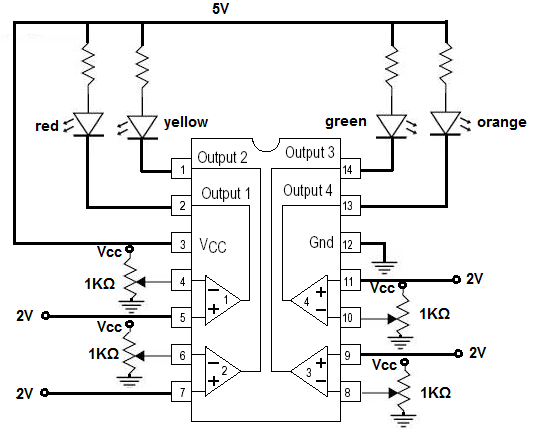
Best way to use an LM339 comparator
LM339 is a widely used voltage comparator. It is a quad comparator, which means it contains four independent comparators in a single package, making it versatile for various applications. In this article, we will discuss the best way to use an LM339 comparator effectively.
Understanding the LM339 Comparator
The LM339 comparator is designed to compare voltages and provide a digital output based on the comparison. It has two input terminals, inverting (-) and non-inverting (+), and one output terminal. The output changes based on the voltages applied to the input terminals. If the voltage at the non-inverting terminal is higher than the voltage at the inverting terminal, the output will be high. If the opposite is true, the output will be low.
Pin Configuration of LM339
The LM339 comparator comes in a 14-pin DIP package. The pin configuration of LM339 is as follows:
- Pin 1: Output 1
- Pin 2: Inverting Input 1 (-1)
- Pin 3: Non-Inverting Input 1 (+1)
- Pin 4: GND
- Pin 5: Non-Inverting Input 2 (+2)
- Pin 6: Inverting Input 2 (-2)
- Pin 7: Output 2
- Pin 8: VCC
- Pin 9: Output 3
- Pin 10: Inverting Input 3 (-3)
- Pin 11: Non-Inverting Input 3 (+3)
- Pin 12: Output 4
- Pin 13: Inverting Input 4 (-4)
- Pin 14: Non-Inverting Input 4 (+4)
Best Practices for Using LM339 Comparator
Here are some best practices to follow when using an LM339 comparator:
- Provide a stable power supply voltage (VCC) within the specified operating range.
- Connect the ground (GND) pin to the circuit ground.
- Apply the input signals to the non-inverting and inverting input pins based on the comparison required.
- Use decoupling capacitors to filter out noise in the power supply.
- Ensure proper output loading to prevent errors in the output signal.
- Consider using hysteresis to prevent oscillations and achieve stable output.
Applications of LM339 Comparator
The LM339 comparator is commonly used in various applications, including:
- Voltage level detection
- Signal conditioning
- Window comparators
- Threshold detectors
- Pulse width modulation
- Zero-crossing detectors
Conclusion
Using an LM339 comparator effectively requires understanding its operation and following best practices for optimal performance. By following the guidelines mentioned in this article, you can use the LM339 comparator in various applications with confidence and achieve reliable results.
Was this helpful?
0 / 0